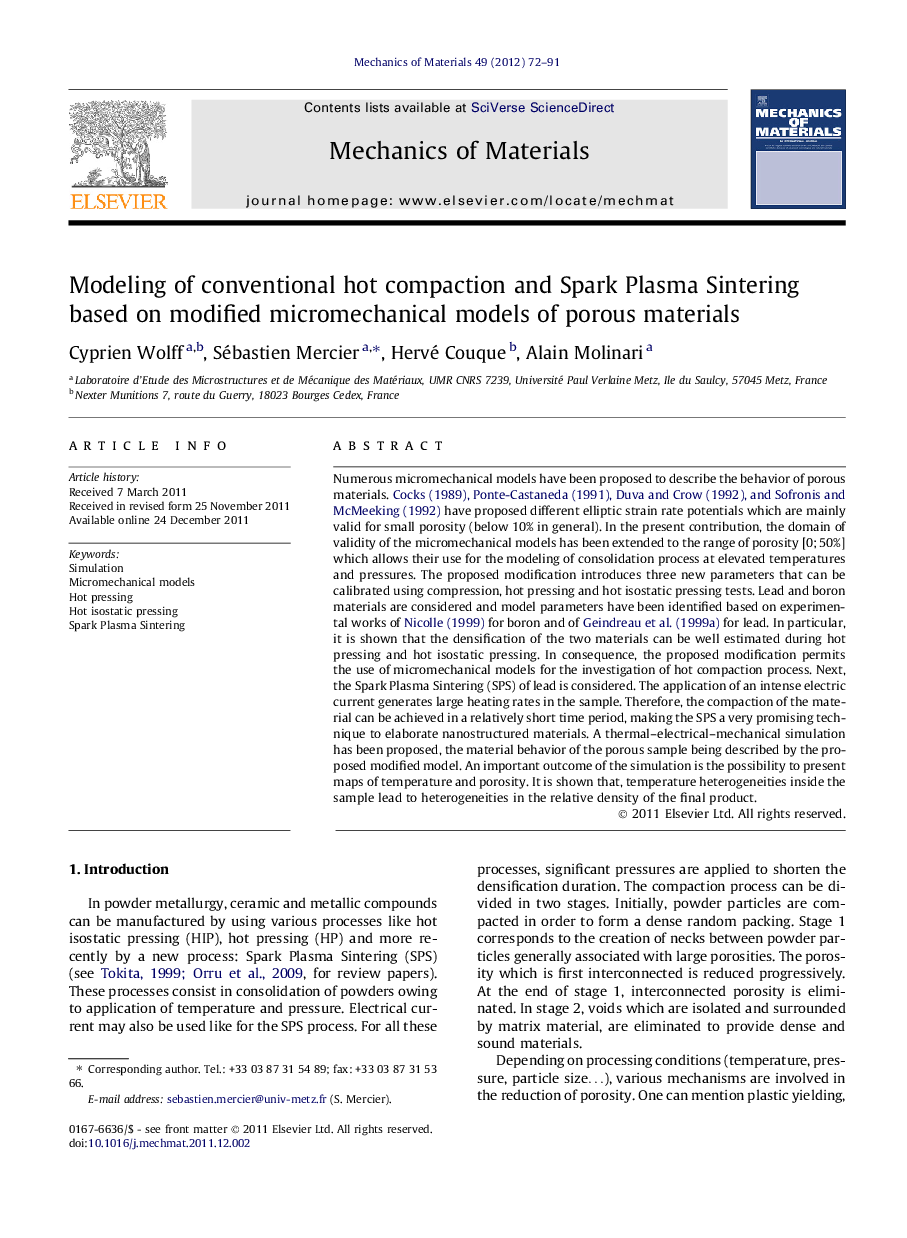| Article ID | Journal | Published Year | Pages | File Type |
|---|---|---|---|---|
| 797628 | Mechanics of Materials | 2012 | 20 Pages |
Numerous micromechanical models have been proposed to describe the behavior of porous materials. Cocks, 1989, Ponte-Castaneda, 1991, Duva and Crow, 1992 and Sofronis and McMeeking, 1992 have proposed different elliptic strain rate potentials which are mainly valid for small porosity (below 10% in general). In the present contribution, the domain of validity of the micromechanical models has been extended to the range of porosity [0; 50%] which allows their use for the modeling of consolidation process at elevated temperatures and pressures. The proposed modification introduces three new parameters that can be calibrated using compression, hot pressing and hot isostatic pressing tests. Lead and boron materials are considered and model parameters have been identified based on experimental works of Nicolle (1999) for boron and of Geindreau et al. (1999a) for lead. In particular, it is shown that the densification of the two materials can be well estimated during hot pressing and hot isostatic pressing. In consequence, the proposed modification permits the use of micromechanical models for the investigation of hot compaction process. Next, the Spark Plasma Sintering (SPS) of lead is considered. The application of an intense electric current generates large heating rates in the sample. Therefore, the compaction of the material can be achieved in a relatively short time period, making the SPS a very promising technique to elaborate nanostructured materials. A thermal–electrical–mechanical simulation has been proposed, the material behavior of the porous sample being described by the proposed modified model. An important outcome of the simulation is the possibility to present maps of temperature and porosity. It is shown that, temperature heterogeneities inside the sample lead to heterogeneities in the relative density of the final product.
► The modeling has been applied to simulate conventional hot compaction. ► Development of a thermal–electrical–mechanical coupling on ABAQUS. ► Simulation of Spark Plasma Sintering is captured by our model. ► Porosity and temperature maps are an important outcome of the contribution.
